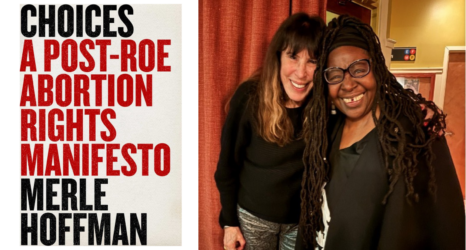A national prison strike beginning September 9 includes prisoners in at least 21 states— making it the largest demonstration of its kind in American history. Organizers set out to protest both the deplorable conditions inside the prison as well as the prison industrial complex, which they say serves to control marginalized communities while creating immense profits. While we may not know the results of the strike for some time—information from inside prisons is notoriously difficult to access, with very few reports currently available—we do know that the strike is the tactic of a growing movement that promises to tackle the systemic violence touching countless women’s lives.
Prison activists have likened the labor conditions inside prisons to “slave labor.” Able-bodied inmates are expected to work for 20 to 40 cents per hour in federal prisons—or for less in state prisons—while generating at least $2 billion in profit. Prisoners across the country have raised many issues in connection to the strike—including the use of long-term solitary confinement, the serving of rotten food and the extreme heat facilities without cooling systems.
Ultimately, the organizers seek to create systematic change by problematizing the profit-making capabilities of prison. In an announcement, they wrote:
Our protest against prison slavery is a protest against the school to prison pipeline, a protest against police terror, a protest against post-release controls. When we abolish slavery, they’ll lose much of their incentive to lock up our children, they’ll stop building traps to pull back those who they’ve released. When we remove the economic motive and grease of our forced labor from the US prison system, the entire structure of courts and police, of control and slave-catching must shift to accommodate us as humans, rather than slaves.
This strike is part of a growing prisoner-led movement against the prison industrial complex from the inside. Participants paid homage to earlier prison rebellions by launching the strike on the anniversary of the 1971 Attica prison uprising, showcasing ideological links to the liberation movements of the period. The growing strength of the current iteration of the movement is apparent in the successes of the 2010 strike in Georgia, the 2013 hunger strikes throughout California’s system and the hunger strike that women in Yuba County Jail carried out in solidarity with deported women.
The movement against the prison industrial complex remains a feminist issue because incarceration intimately affects so many women’s lives. The high rates of incarceration of men of color—who make up only 30 percent of the national population but are 60 percent of male prisoners—is a deep injustice which also directly impacts the women in their communities. The rates of incarceration of women, however, have also raised by 800 percent since the 1980’s—making the over-incarceration of women an epidemic of its own. Like their male counterparts, African American and Latina women are disproportionately over-represented in prisons.
Incarcerated women are also acutely affected by gendered violence. Women in prison are highly likely to have experienced physical or sexual violence. 92 percent of women prisoners in California report that they have been abused. 59 percent of trans women—who are too often housed in men’s prisons—are sexually abused while in custody. Chelsea Manning is now on a hunger strike to demand better conditions, saying in a statement that she is “no longer going to be bullied by this prison—or by anyone within the U.S. government.”
Feminist and anti-racist activists like Angela Davis, CeCe Mcdonald, and Sylvia Rivera have been on the front lines of opposition to the prison industrial complex. In an essay, Davis reminds activists to center women’s experiences of violence in prisons:
When we think about racist violence—repressive violence—we generally assume that the targets are male. We forget that women constitute, all over the world, not just in this country, the targets of violence that have been the most harmed, the most damaged. We don’t ask [if there] is a connection between domestic violence—the violence in intimate relationships—and the violence that happens in the streets and inside prisons.
Knowing that organizers expect roadblocks to reporting on the outcomes and also expect harsh punishments for participating in the protest, activists on the outside are working to publicize the inmate’s demands. Organizers have asked for supporters to show solidarity with their movement by spreading the word about their action.
“When we stand up and refuse,” the organizers wrote, “we need to know our friends, families and allies on the outside will have our backs… Step up, stand up, and join us. Against prison slavery. For liberation of all.”





